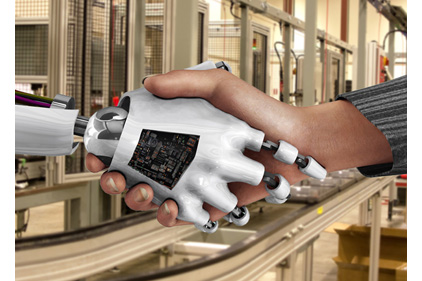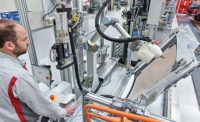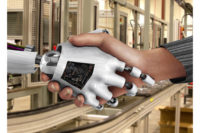Manufacturers have lots of different robotic options available today. Proven technology includes articulated six-axis robots, Cartesian robots, delta robots and SCARA robots, which can each handle a variety of assembly tasks. So, why all the hype about a new class of automation that allows robots and human to closely interact on the plant floor?
“Collaborative robots offer many advantages over traditional industrial robots for certain applications,” claims Eric Foellmer, marketing and communications manager at Rethink Robotics Inc., which recently launched a collaborative robot called Baxter. “They are safe to operate next to people without cages, so they can be utilized in highly manual production lines that have historically been off-limits to traditional robotic systems.
“Most robots in the category are also easier to program than their industrial counterparts,” adds Foellmer. “In Baxter’s case, even line workers and other non-engineers can train the robot to do a task.”
Collaborative robots are also quite flexible; they can be reprogrammed quickly and easily to work on different tasks in a facility. “This helps to maximize their return on investment since you’re able to utilize them across multiple lines in a plant,” says Foellmer.
“Collaborative robots are generally far less expensive to deploy than industrial robots, especially when considering a streamlined process for integration that can add two to five times the base cost of a typical industrial robot,” argues Foellmer.
“There are many industries, such as automotive, that are already very heavily automated with traditional industrial robotics,” says Foellmer.” I anticipate that industries and companies in which automation is less prevalent today (due to expense, danger, high changeover requirements and other factors) will be the ones that see the largest influx of collaborative robotics over the next decade.
“Job shops, contract packagers and third-party logistics providers—industries relying largely on human labor today—will stand to benefit greatly from these technologies as they look to become more competitive on a global scale,” predicts Foellmer. “Overall, it’s a very exciting time to be part of this industry.”




